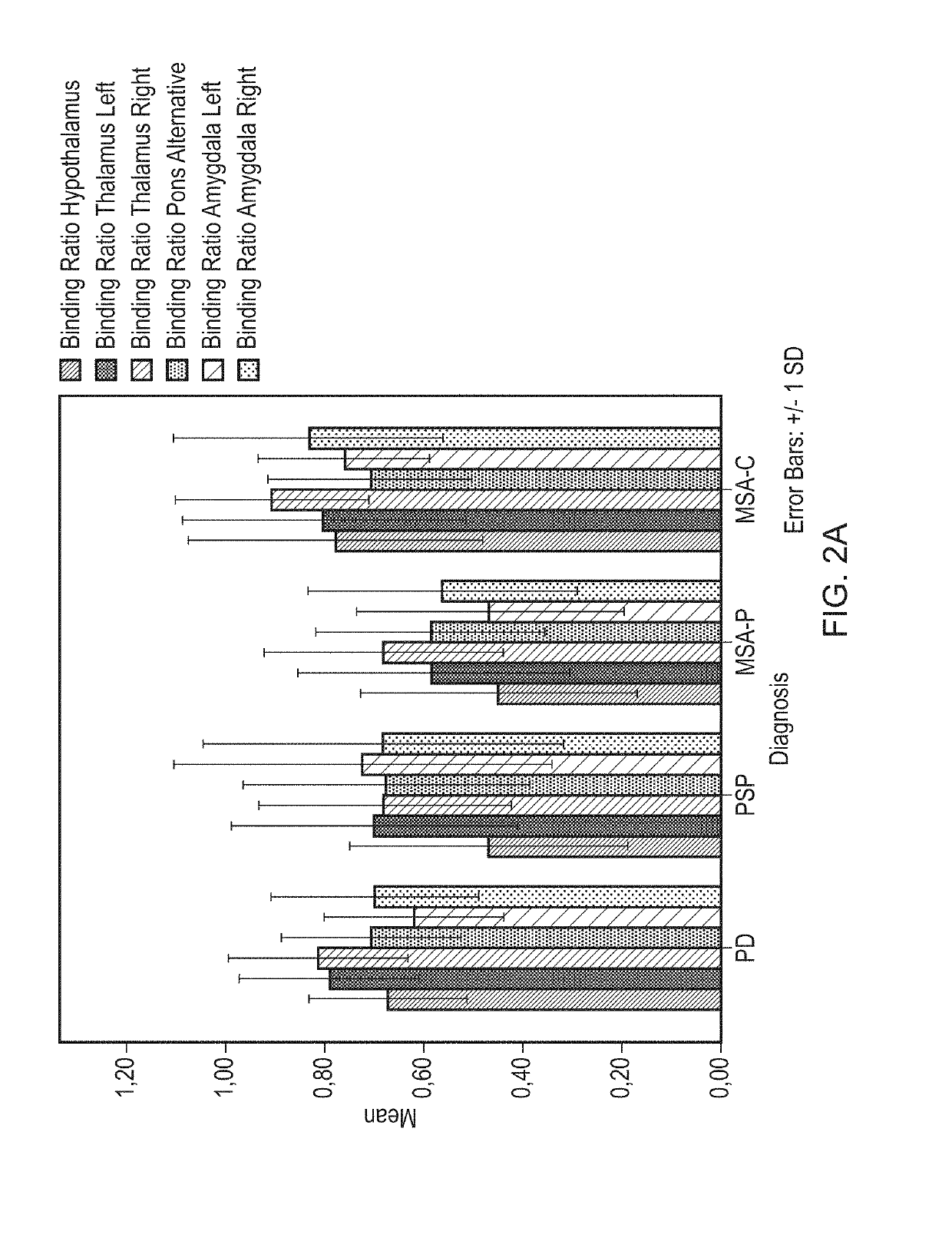Differential diagnosis
a diagnostic and differential diagnosis technology, applied in the field of in vivo imaging, can solve problems such as difficulty in committing to an accurate clinical diagnosis
- Summary
- Abstract
- Description
- Claims
- Application Information
AI Technical Summary
Benefits of technology
Problems solved by technology
Method used
Image
Examples
example 1
Imaging
Example 1(i): Acquisition and Reconstruction Procedure
[0072]All patients received oral potassium perchlorate to block thyroid uptake of free radioactive iodide. [123I]FP-CIT was injected intravenously 3 hours before image acquisition at an approximate dose of 185 MBq (specific activity >185 MBq / nmol; radiochemical purity >99%). Subjects were imaged using a dual-head gamma camera (E.Cam; Siemens. Munich. Germany) with a fan-beam collimator. 60×30 second views per head over a 180° orbit on a 128×128 pixel matrix were acquired resulting in a total imaging time of 30 minutes. Image reconstruction was performed using a filtered back projection with a Butterworth filter (order 8. cut-off 0.6 cycles / cm; voxel size: 3.9 mm3 after reconstruction). Scans were reoriented manually to ensure that left and right striatum were aligned.
Example 1(ii): Region-of-Interest (ROI) Analysis
[0073]ROIs were defined for the DAT-rich caudate nucleus and the SERT-rich thalamus from the automated anatomi...
example 1 (
Example 1(vi): ROC Analysis
[0102]ROC-Curve Mean BRs of Every ROI Combined
[0103]To determine a possible combination of striatal with extrastriatal ROIs to increase differential diagnostic possibilities between PD, MSA-P and PSP, receiver operator characteristics curves (ROC-curves) were made for several combinations of ROIs, using the following method:
[0104]For this ROC analysis patients not on SSRIs were used. To test for the possibility to distinguish between PD and non-PD in this group, comparison between groups as PD vs non-PD was determined, the latter entailing MSA-P and PSP.
[0105]Followed Steps:[0106]1. Logistic regression on PD, MSA-P, PSP patients divided in 2 groups→PD (yes / no) with all (10) striatal and extrastriatal BRs.[0107]2. Estimated expected values are saved.[0108]3. Estimated values are combined with PD (yes / no) in ROC curve.
[0109]From the coordinates of the curve Table, the following values were subtracted:
[0110]Sensitivity / specificity (caudate and posterior putam...
PUM
| Property | Measurement | Unit |
|---|---|---|
| pH | aaaaa | aaaaa |
| time | aaaaa | aaaaa |
| threshold | aaaaa | aaaaa |
Abstract
Description
Claims
Application Information
 Login to View More
Login to View More - R&D
- Intellectual Property
- Life Sciences
- Materials
- Tech Scout
- Unparalleled Data Quality
- Higher Quality Content
- 60% Fewer Hallucinations
Browse by: Latest US Patents, China's latest patents, Technical Efficacy Thesaurus, Application Domain, Technology Topic, Popular Technical Reports.
© 2025 PatSnap. All rights reserved.Legal|Privacy policy|Modern Slavery Act Transparency Statement|Sitemap|About US| Contact US: help@patsnap.com



